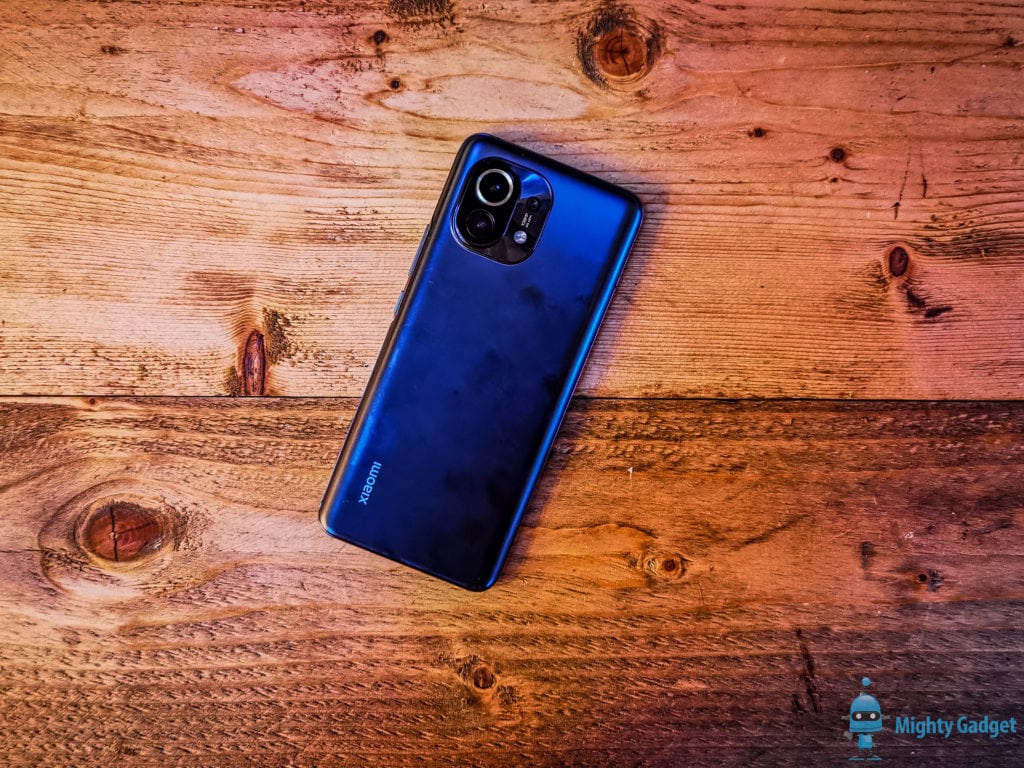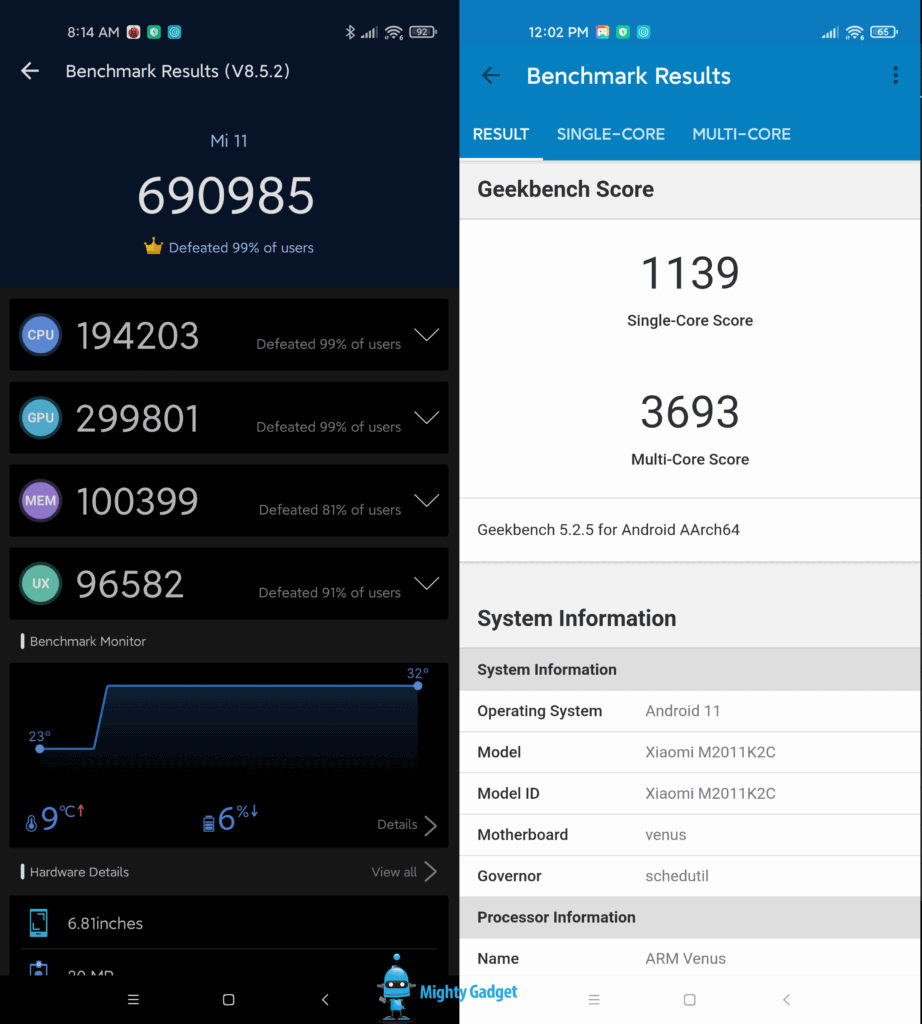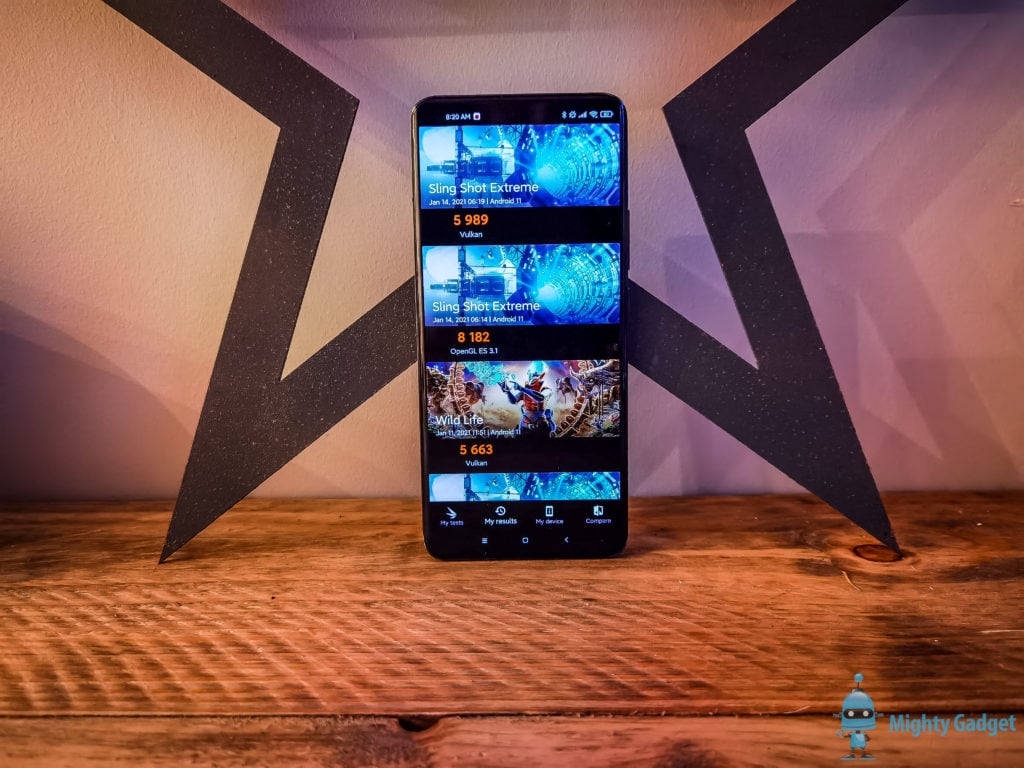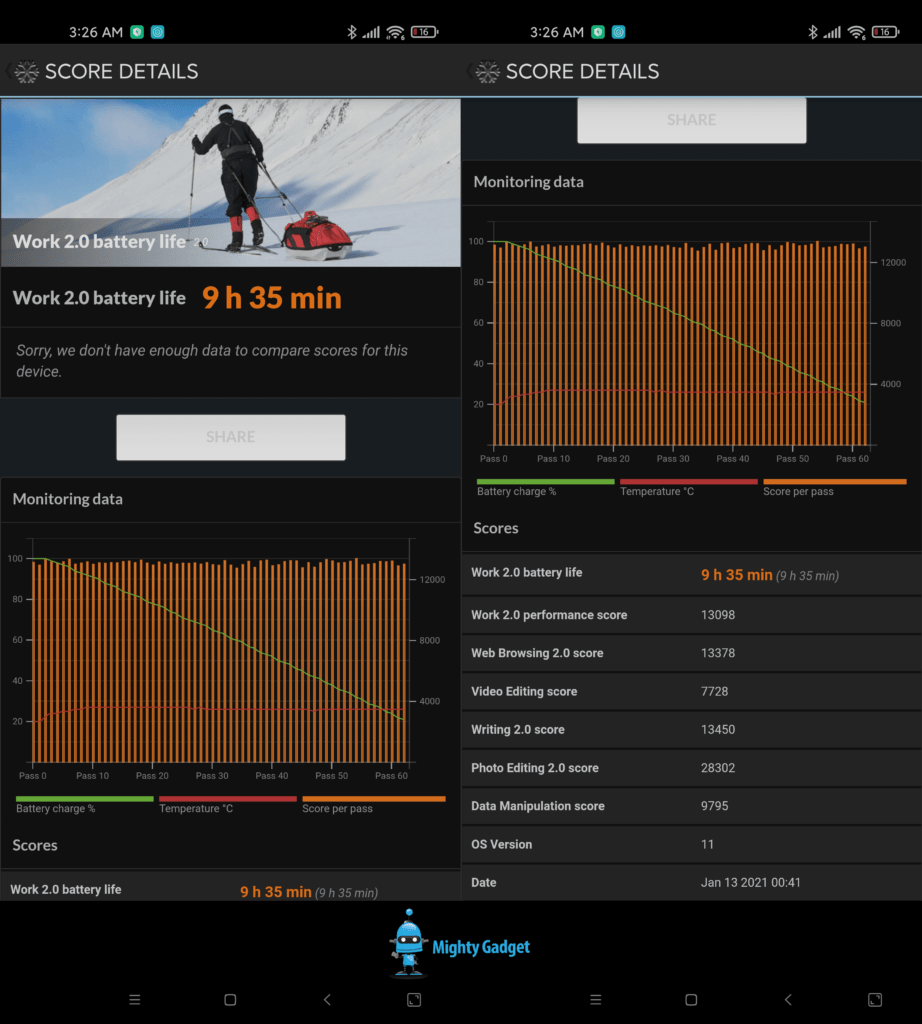Later today, Samsung will unveil their flagship Samsung Galaxy S21, this is traditionally the first phone to feature the latest flagship chipset from Qualcomm with all other brands trying to play catch up.
This year, however, Xiaomi beat them to it, with a couple of caveats. The Xiaomi Mi 11 was announced just before the New Year, with sales starting at the begging of January in China only. The also only released one phone rather than the Pro model that typically goes along with it.
Of course, in the UK, Samsung will use the Exynos 2100 chipset, so at the moment, there is no word on when a Qualcomm Snapdragon 888 phone may be available in the UK.
Importing from China – Not many downsides this time

I impulsively bought it from Giztop allowing me to get an early flagship review in for the year setting the benchmark for all other phones. Unlike the Redmi K30 Ultra with the MediaTek Dimensity 1000+, this phone doesn’t come with many downsides being imported from China. To the best of my knowledge, it has all the required 4G and 5G bands for reliable reception, it also has NFC working with Google Pay, and there is Widevine L1 meaning I can go up to HD on Netflix.
Shipping was surprisingly fast with no additional charges.
Qualcomm Snapdragon 888 vs Snapdragon 865 vs MediaTek Dimensity 1000+ Specification
| SoC | Snapdragon 888 | Snapdragon 865 | Dimensity 1000+ | Kirin 9000 |
|---|---|---|---|---|
| CPU | 1x ARM Cortex-X1 @ 2.84 GHz | 1x 2.84GHz (Cortex A77) | 4x 2.6GHz (Cortex A77) | 1x Cortex A77 @ 3.13Ghz |
| 3x ARM Cortex-A78 @ 2.42 GHz | 3x 2.4GHz (Cortex A77) | 4x 2GHz (Cortex A55) | 3x Cortex A77 @ 2.54Ghz |
|
| 4x ARM Cortex-A55 @ 1.8 GHz | 4x 1.8GHz (Cortex-A55) | 4x Cortex A55@ 2.05Ghz |
||
| GPU | Qualcomm Adreno 660 +35% perf vs SD865 |
Adreno 650 | Mali-G77 MP9 | Mali-G78 24 Cores |
| Process | Samsung 5nm (5LPE) |
7nm | 7nm | TSMC 5nm |
Just to add an extra dimension, I am also comparing the MediaTek Dimensity 1000+. I am hopeful we will see some phones launched with this in the UK soon. It is never going to compete with the Snapdragon 888 on performance but it will offer a flagship like experience for a fraction of the cost.
I am not comparing the Snapdragon 865+ because there are not that many phones using it, and I never reviewed one, so don’t have my own set of benchmarks.
Qualcomm Snapdragon 888 vs Snapdragon 865 vs MediaTek Dimensity 1000+ Benchmarks
For the benchmarks, I have reused some old tables from past reviews. The devices I have to hand are:
- Xiaomi Mi 11 – Qualcomm Snapdragon 888
- Realme X50 Pro – Qualcomm Snapdragon 865
I have also included data for the Asus ROG Phone 3 and Huawei Mate 40 Pro, I have not personally used these but taken data from elsewhere (mainly notebookcheck.net).
Snapdragon 888 vs Snapdragon 865 vs MediaTek Dimensity 1000+ vs Kirin 9000 Antutu Benchmark Compared

| Total | CPU | GPU | MEM | UX | Temp Increase | Battery Decrease | |
|---|---|---|---|---|---|---|---|
| Xiami Mi 11 Snapdragon 888 |
690985 | 194203 | 299801 | 100399 | 96582 | 9 | 6 |
| Hueawei Mate 40 Pro Kirin 9000 |
657784 | 180692 | 275208 | 116336 | 85542 | ||
| Realme X50 Pro Snapdragon 865 |
590914 | 183192 | 104222 | 104222 | 84877 | 4.2 | 4 |
| Redmi K30 Pro Dimensity 1000+ |
482257 | 134822 | 197568 | 73916 | 75951 | 8.6 | 4 |
First up is the often cited and controversial Antutu benchmark, which gives us a general idea of all-round performance.
In this one, I have included the official figures for the Huawei Mate 40 Pro, just for comparison.
As expected, the Qualcomm Snapdragon 888 comfortably sits at the top of the performance table.
Compared to the previous generation, we have some impressive results. A 17% performance gain overall.
The CPU difference is less impressive, with just a 6% difference in the results. It is the CPU changes and the new ARM Cortex-X1 that has received the most press attention, so I was expecting a little bit more. The GPU makes up for things with a 35% uplift in performance.
The memory performance is higher on the Realme, but this is likely due to it running 12GB vs 8GB. The Black Shark 3 scored 92416, which gives an 8.5% difference with the SD888.
Compared to the Kirin 9000 there is a 5% gap in performance, and surprisingly the Qualcomm wins for both CPU and GPU, so the massive 24-core GPU of the Kirin can’t quate topple the Andreno
The SD888 has a 43% advantage vs the Dimensity, but that’s older tech, and I paid $300 (75%) more for the Mi 11 vs the K30 Ultra, so price/performance is good.
SD888 Antutu Thermals and Battery drain

There have been reports that the Xiaomi Mi 11 has poor thermals and the SD888 is a battery drain. I have not experienced too much of an issue in day-to-day use. In Antutu there is a 9% increase and a 6% battery drop, which is quite a bit higher than the SD865 on the Realme. So there does seem to be some truth behind this claim
Snapdragon 888 vs Snapdragon 865 vs MediaTek Dimensity 1000+ Geekbench Benchmark
| Chipset | Single Core | Multi Core | |
|---|---|---|---|
| Xiaomi Mi 11 | Snapdragon 888 | 1139 | 3693 |
| Huawei Mate 40 Pro | Kirin 9000 | 1020 | 3275 |
| Asus ROG Phone 3 S |
Snapdragon 865+ | 975 | 3357 |
| Realme X50 Pro | Snapdragon 865 | 910 | 3205 |
| Black Shark 3 | Snapdragon 865 | 903 | 3338 |
| Redmi K30 Ultra | Dimensity 1000+ | 782 | 2890 |
| OnePlus 7T | Snapdragon 855+ | 706 | 2660 |
| Black Shark 2 | Snapdragon 855 | 670 | 2370 |
| Huawei P40 Lite 5G | Kirin 820 | 606 | 2304 |
| Realme X50 | Snapdragon 765G | 612 | 1899 |
Things look more positive for the CPU with GeekBench with a 25% difference in single-core performance compared to the Snapdragon 865 and comfortably ahead of the SD865+ and Kirin 9000.
Multi-core results are less impressive thanks to all the chipsets using the same efficient cores. You get a 15% increase vs the SD865 here.
Snapdragon 888 vs Snapdragon 865 vs MediaTek Dimensity 1000+ vs Kirin 9000 3Dmark gaming benchmarks

While I can’t confirm the Kirin 9000 results on this one, it looks like the Kirin 9000 does have the potential to flex that 24-core GPU achieving an OpenGL score 11% higher than the SD888.
The SD888 still does a good job though, scoring 15% more than its processor or 8% more than the SD865 and 25% more than the Dimensity 1000+.
The Wild Life tests are new so not available for the older reviews, but this paints an even rosier picture compared to the Snapdragon 865 with a 49% advantage.
| Chipset | Sling Shot Extreme OpenGL | Sling Shot Extreme Vulcan | Wild Life | |
|---|---|---|---|---|
| Xiaomi Mi 11 | Snapdragon 888 | 8274 | 8182 | 5663 |
| Huawei Mate 40 Pro | Kirin 9000 | 9168 | 8401 | 5976 |
| Asus ROG Phone 3 | Snapdragon 865+ | 7645 | 7002 | 4127 |
| Realme X50 | Snapdragon 865 | 3791 | ||
| Black Shark 3 | Snapdragon 865 | 7215 | 6606 | |
| Redmi K30 Ultra | Dimensity 1000+ | 6614 | 6143 | |
| OnePlus 7T | Snapdragon 855+ | 6278 | 5504 | |
| Black Shark | Snapdragon 855 | 5791 | 5030 |
Snapdragon 888 vs Snapdragon 865 vs MediaTek Dimensity 1000+ PCMark Work 2.0 and Battery Benchmarks

| Performance Score | Work 2.0 Battery | |
|---|---|---|
| Xiaomi Mi 11 | 10175 | 9h 35min |
| Huawei Mate 40 Pro Kirin 9000 |
9149 | |
| Huawei P40 Pro Kirin 990 5G |
15h 0min | |
| Redmi K30 Ultra Dimensity 1000 |
9431 | |
| Realme X50 Pro SD865 |
13307 / 8839 | 9h 3min |
| BlackShark 3 SD865 |
9981 | 16h 49min |
PCMark results tend to be all over the place depending on how a phone decides to clock the chipset for a specific task. Realme is a bad offender for this with overinflated results if you run it in smart mode. Even the Mi 11 has some confusing results, the normal test gives a result of 10175, but the extended battery test shows it scoring 13098.
PCMark Battery Test
The battery test is an awkward one, too, with the above problem combined with different battery sizes between phones.
For the Mi 11, it has scored the lowest since I reviewed the Realme X50 Pro. The Realme X50 Pro has a much smaller batter though.
I have not been hammering the Mi 11 since I got it, but light to medium use easily lasts me over a day, I didn’t charge it yesterday and this more I woke up and it was at 42%.
Snapdragon 888 vs Snapdragon 865 vs MediaTek Dimensity 1000+ Androbench storage benchmarks
| Chipset | Seq Read MB/s | Seq Write MB/s | Rd Read | Rd Write | |
|---|---|---|---|---|---|
| Xiaomi Mi 11 | Snapdragon 888 | 1567 | 727 | 248 63581 IOPS |
284 72777 IOPS |
| Huawei Mate 40 Pro | Kirin 9000 | 2037.44 | 1321.01 | 324.97 | 277.65 |
| Asus ROG Phone 3 | Snapdragon 865+ | 1710.23 | 771.91 | 274.33 | 280.64 |
| Realme X50 Pro | Snapdragon 865 | 1770 | 763 | 250 64168 IOPS |
231 59206 IOPS |
| P40 Pro | Kirin 990 | 1807 | 392 | 221 56768 IOPS |
258 66295 IOPS |
| Redmi K30 Ultra | Dimensity 1000+ | 1562 | 714 | 246 55393 IOPS |
210 53850 IOPS |
I don’t always benchmark storage, or at least post the results on my reviews. So some missing bits of data. Nothing particularly impressive here, I don’t think storage tech has changed much since the SD865 and performance is dependant on the storage each brand uses for their phone.
Huawei is clearly leading the pack this year, but I am hardly upset by the Xiaomi Mi 11 performance.
Snapdragon 888 vs Snapdragon 865 vs MediaTek Dimensity 1000+ Wi-Fi Benchmarks
I generally don’t benchmark Wi-Fi on phones at all, with this year’s phones we are starting to see a mixture of performance when you compare new and old. Wi-Fi 6 has been on flagship phones for a year now, but the Qualcomm based chipsets were restricted to 1200Mbps while Huawei can go up to 2400Mbps.
With the SD888 that changes again, and now you have Wi-Fi 6E which can use the 6Ghz frequency. I don’t have a Wi-Fi 6E router, so not tested that bit yet.
Testing is done with the Netgear RAX120 this is capable of Wi-Fi 6 with 160Mhz, and it is connected with 2.5GbE to my server running iPerf, and my PC with the Intel AX210 achieves speeds of 1.2 Gbits/sec.
So with the Xiaomi Mi 11 I can now connect to the network at the full 2400Mbps on the 160Mhz wide channel vs 1200Mbps on the Realme X50 Pro. The Huawei P40 Pro from last year could already do this.
However, even though the Mi 11 connected at 2400Mbps the best I could mange was 916Mbit/s not much better than the 854Mbit/s on the Realme and well behind the 1207Mbit/s on the Huawei P40 Pro.
| WiFi Throughput | |
| Xiami Mi 11 Snapdragon 888 |
916 |
| Realme X50 Pro Snapdragon 865 |
853 |
| Huawei P40 Pro Kirin 990 |
1207 |
| Huawei P30 Pro Kirin 980 Wi-Fi 5 |
787 |
Snapdragon 888 vs Snapdragon 865 vs MediaTek Dimensity 1000+ GFXBench
I will update this part of the analysis when I have finished testing and reviewing the Mi 11.
Overall
The Qualcomm Snapdragon 888 continues the tradition of offering just enough performance to be impressive, but not being quite as revolutionary as the marketing suggests.
Flagship chipsets offer so much power nowadays real-world benefits have plateaued for things like CPU and GPU performance. I doubt I’d notice much difference in COD with the SD865 vs SD888.
This is why we have seen a focus on AI and image processing and claims of improved efficiency.
The trend of yearly upgrades has died out nowadays, thanks to the ever-increasing price of flagship phones. I would say the year performance difference also justifies taking a year out from updating you phone. Moving from the SD855 to the SD888 will be far more impressive, and you will have saved a few quid.
Posted by Mighty Gadget Blog: UK Technology News and Reviews